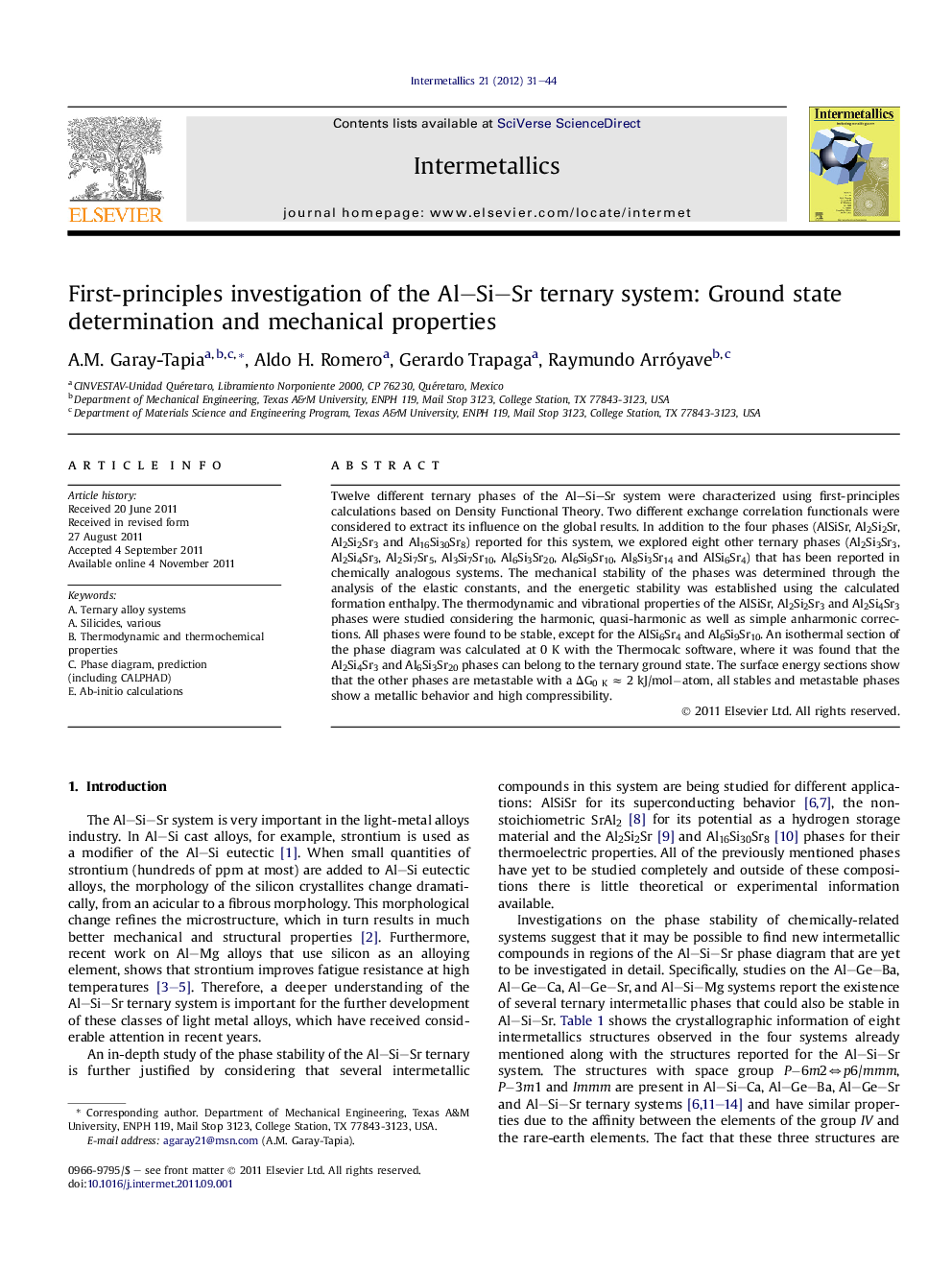| Article ID | Journal | Published Year | Pages | File Type |
|---|---|---|---|---|
| 1600620 | Intermetallics | 2012 | 14 Pages |
Twelve different ternary phases of the Al–Si–Sr system were characterized using first-principles calculations based on Density Functional Theory. Two different exchange correlation functionals were considered to extract its influence on the global results. In addition to the four phases (AlSiSr, Al2Si2Sr, Al2Si2Sr3 and Al16Si30Sr8) reported for this system, we explored eight other ternary phases (Al2Si3Sr3, Al2Si4Sr3, Al2Si7Sr5, Al3Si7Sr10, Al6Si3Sr20, Al6Si9Sr10, Al8Si3Sr14 and AlSi6Sr4) that has been reported in chemically analogous systems. The mechanical stability of the phases was determined through the analysis of the elastic constants, and the energetic stability was established using the calculated formation enthalpy. The thermodynamic and vibrational properties of the AlSiSr, Al2Si2Sr3 and Al2Si4Sr3 phases were studied considering the harmonic, quasi-harmonic as well as simple anharmonic corrections. All phases were found to be stable, except for the AlSi6Sr4 and Al6Si9Sr10. An isothermal section of the phase diagram was calculated at 0 K with the Thermocalc software, where it was found that the Al2Si4Sr3 and Al6Si3Sr20 phases can belong to the ternary ground state. The surface energy sections show that the other phases are metastable with a ΔG0 K ≈ 2 kJ/mol−atom, all stables and metastable phases show a metallic behavior and high compressibility.
Graphical abstractFigure optionsDownload full-size imageDownload as PowerPoint slideHighlights► The ternary ground state was determined combining thermocal software and the formation enthalpy. ► Six new ternary phases in the Al–Si–Sr system show mechanically and energetically stability. ► The vibrational and thermodynamic properties of the AlSiSr, Al2Si2Sr3 and Al2Si4Sr3 were studied.
